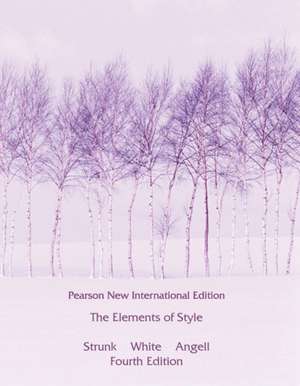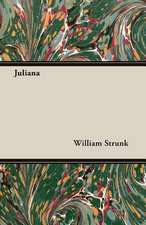Elements of Style, The
Autor E. White, William Strunken Limba Engleză Paperback – 12 aug 2013
You know the authors' names. You recognize the title. You've probably used this book yourself.
This is The Elements of Style, the classic style manual, now in a fourth edition. The revisions to the new edition are purposely kept minimal in order to retain the book's unique tone, wit, and charm. A new Glossary of the grammatical terms used in the book provides a convenient reference for readers.
The discussion of pronoun use is revised to reflect the contemporary concern with sexist language. In addition, there are numerous slight revisions in the book itself which implement this advice. A new Foreword by Roger Angell reminds readers that the advice of Strunk & White is as valuable today as when it was first offered.
This book has conveyed the principles of English style to millions of readers. Use the fourth edition of "the little book" to make a big impact with writing.
Preț: 133.77 lei
Nou
25.60€ • 26.78$ • 21.26£
Carte disponibilă
Livrare economică 12-26 martie
Livrare express 26 februarie-04 martie pentru 19.86 lei
Specificații
ISBN-10: 1292026642
Pagini: 128
Dimensiuni: 187 x 246 x 10 mm
Greutate: 0.26 kg
Ediția:4. Auflage
Editura: Pearson Education
Cuprins
IV.WORDS AND EXPRESSIONS COMMONLY MISUSED.
V.AN APPROACH TO STYLE (WITH A LIST OF REMINDERS).




















